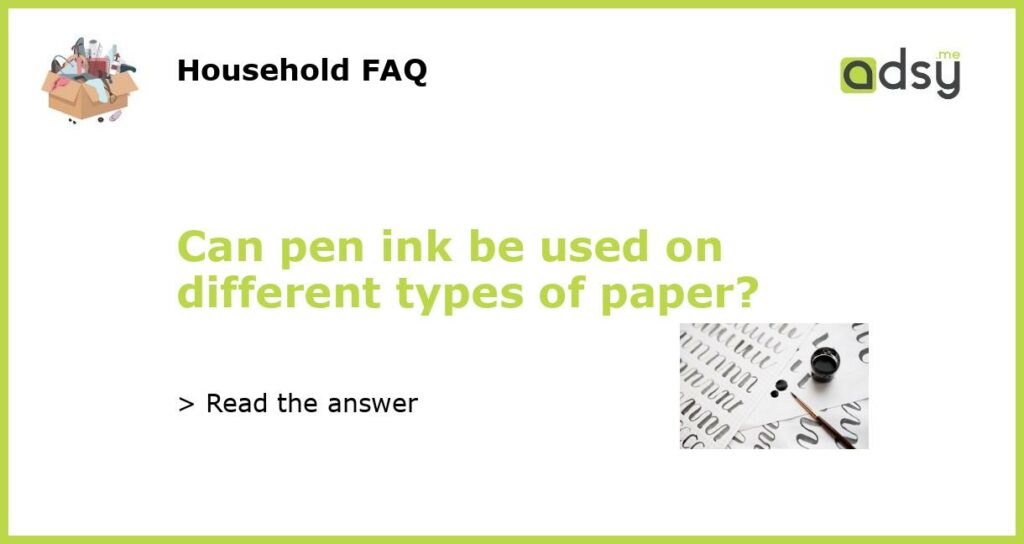Yes, pen ink can be used on different types of paper
Pen ink can be used on a variety of paper types, including regular copy paper, glossy paper, and even textured paper. However, the type of paper you use may affect how the ink looks and how it is absorbed by the paper. Different types of ink and pens may also perform differently on different types of paper. In this article, we will explore the compatibility of pen ink with different types of paper and provide some tips for achieving optimal results.
Regular copy paper
Regular copy paper is the most common type of paper and is widely used for printing and writing. Pen ink generally works well on regular copy paper, as it is designed to absorb ink. However, the absorbency of the paper may vary depending on the quality and thickness of the paper. Cheaper, thinner copy paper may not absorb ink as well, resulting in smudging or bleeding. To prevent this, it is recommended to use pens with fast-drying ink and to allow the ink to dry completely before handling the paper.
Glossy paper
Glossy paper, also known as photo paper, has a shiny and smooth surface designed to enhance the appearance of printed photos or documents. Using pen ink on glossy paper can be challenging, as the ink may smudge or smear on the smooth surface. Additionally, the ink may take longer to dry on glossy paper compared to regular paper. To improve the performance of pen ink on glossy paper, it is recommended to use pens with quick-drying, waterproof ink. Gel pens and pigment-based inks are often better suited for use on glossy paper.
Textured paper
Textured paper, such as watercolor paper or specialty stationery, has a rough or tactile surface that adds visual interest and a unique feel to printed or written materials. Pen ink can be used on textured paper, but the effect may be different compared to smooth papers. The texture of the paper may cause the ink to spread or feather, resulting in a less precise or defined line. Pens with fine or micro tips are recommended for use on textured paper to help mitigate this issue. Additionally, it is important to allow the ink to fully dry before handling or writing on the textured paper to prevent smudging.
Tips for optimal results
Here are a few tips to help you achieve the best results when using pen ink on different types of paper:
- Choose the right pen: Different pens and inks perform differently on different types of paper. Experiment with different types of pens, such as ballpoint, rollerball, gel, or fountain pens, to find the one that works best for your needs.
- Use fast-drying ink: Ink that dries quickly can help prevent smudging and bleeding, especially on high-gloss or smooth papers. Look for pens that specifically mention fast-drying or quick-drying ink.
- Allow the ink to dry completely: To prevent smudging, be patient and allow the ink to dry fully before handling or writing on the paper. This is especially important when using pen ink on glossy or textured paper.
- Test the ink on a small area: Before committing to writing or drawing on an important document or piece of paper, test the ink on a small, inconspicuous area to ensure it performs as desired.
- Consider the purpose and longevity: If the document or artwork is meant to be preserved or displayed for an extended period, choose archival-quality inks and acid-free paper to prevent fading and deterioration over time.






